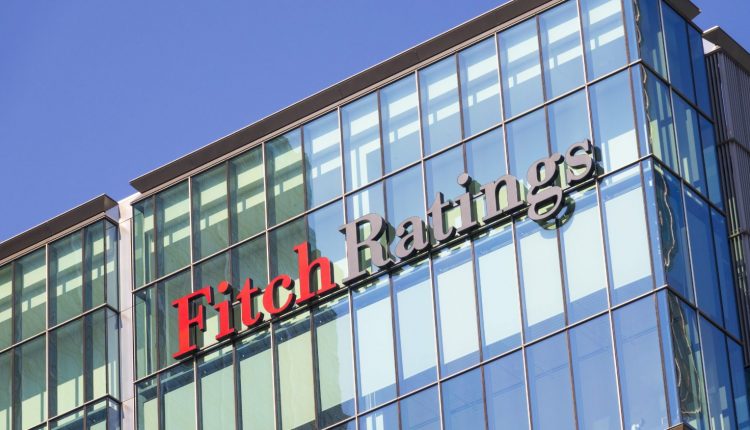النص الكامل لتقرير مؤسسة فيتش عن الإقتصاد المصري (إنجليزي)
Fitch Downgrades Egypt to B Outlook Negative
Fitch Downgrades Egypt to ‘B’; Outlook Negative ( THE LINK)
Fitch Ratings – London – 05 May 2023: Fitch Ratings has downgraded Egypt’s Long-Term Foreign-Currency (LTFC) Issuer Default Rating (IDR) to ‘B’ from ‘B+’. The Outlook is Negative.
A full list of rating actions is detailed below.
KEY RATING DRIVERS
The downgrade of Egypt’s IDRs and the Negative Outlook reflect the following key rating drivers and their relative weights:
High
Downgrade, Negative Outlook: In Fitch’s view, external financing risk has increased given high external financing requirements, constrained external financing conditions and the sensitivity of Egypt’s broader financing plan to investor sentiment. All this comes against a background of high uncertainty on the exchange-rate trajectory, and reduced external liquidity buffers.
We see a risk that a further delayed transition to a flexible exchange rate will further undermine confidence, and, potentially, delay the IMF programme. The rating action also captures a marked deterioration of public debt metrics, including a renewed deterioration in government interest costs/revenue, which, if not reversed, would put medium-term debt sustainability at risk.
External Financing Under Pressure: Uncertainty around Egypt’s ability to meet its external financing needs has increased, reflecting still constrained prospects for market access and the lack of market confidence in the Central Bank of Egypt’s (CBE) new exchange rate regime, which has held back foreign currency (FC) inflows.
Incomplete Transition to Flexible Exchange Rate: FC shortages resurfaced in February 2023, while the official exchange rate stabilised, following successive devaluations that had left the Egyptian pound against the US dollar about 50% weaker compared with the start of 2022.
In our view, the stabilisation partly reflects the reluctance of market participants to transact in the foreign exchange (FX) market, given high uncertainty around the future exchange rate level, and also interventions by public sector banks, further damaging confidence in the durably flexible exchange rate regime and the value of the currency. Fitch assumes that the exchange rate will depreciate further before stabilising in the financial year ending June 2024.
External Financing Needs Remain Large: The external financing requirement is more challenging in FY24 due to increasing government external debt maturities of around USD7.2 billion, up from USD4.3 billion in FY23, including USD2.1 billion of Eurobond maturities (compared with USD0.8 billion in FY23). Fitch projects a current account deficit of 3.3% of GDP (about USD12 billion) in FY23 and FY24, versus 3.5% (over USD16 billion) in FY22, with most of the improvement coming from stronger tourism and Suez Canal receipts.
Limited External Liquidity Buffers: External liquidity buffers remain weak, after a marked deterioration in 2022. Gross official reserves have started to recover to USD34.4 billion at end-March 2023 from a low of USD33.1 billion in August 2022 (and USD41 billion in February 2022), after the CBE let the pound depreciate in October 2022 and January 2023. CBE’s and commercial banks’ net foreign assets, however, deteriorated again in the beginning of the year to a negative USD24.5 billion in March 2023 from a negative USD20 billion in December 2022, reflecting constraints on FX liquidity.
External Financing Plan: The authorities’ external financing plan hinges on an annual net foreign direct investments (FDI) target of USD10 billion (2.7% of GDP) from FY23, supported by the participation of GCC partners including in the government’s privatisation programme. Together with some return of portfolio inflows, this could cover the CAD. However, these FDI flows are subject to execution risk, and there is limited visibility over their timing. Nevertheless, we continue to believe GCC support to Egypt’s economy is strong, and successful divestment deals with Gulf partners would help restore confidence and unlock further investments.
According to the government, it is well advanced to secure a total of USD6.8 billion external financing to cover external debt maturities for FY24 and the remainder of FY23. The FY24 financing plan, however, is currently short of near USD1 billion financing and incorporates about USD2 billion bond issuance, while prospects for market access remain constrained. Still, Egypt’s largest FY24 Eurobond maturities (about USD1.6 billion) are due in the second half of the year, providing some space to secure additional financing.
Medium
Debt Metrics Deterioration: We forecast general government debt will increase to 96.7% of GDP in FY23, from 86.6% in FY22, well above the expected 2023 ‘B’ median of 54.7%, mainly due to the currency devaluations inflating external debt as a share of GDP. Although we expect negative real interest rates will support a significant reduction in debt to 87.3% of GDP by end-FY24, Egypt’s high public debt levels remain a key rating weakness. Egypt’s interest payment continues to pose a risk to debt sustainability, rising to over 54% of revenue in FY24, one of the highest among Fitch-rated sovereigns.
Currency Weakness Impacts Inflation and Growth: Headline inflation reached 32.6% in March 2023, reflecting the currency devaluation, on top of fuel price adjustments, and supply bottlenecks due to FC shortages. We see uncertainty about the timing of the inflation peak and its level, as well as the adjustment period for the economy to absorb further currency weakness.
We forecast FY23 average inflation to reach 24% and to steadily decrease to 18% in FY24, helped by a favourable base effect. We expect inflation, FC shortages, fiscal policy tightening and heightened economic uncertainty to weigh on growth, which will slow to 4% in FY23 from 6.6% in FY22 before recovering to 4.5% in FY24.
Egypt’s ‘B’ IDRs also reflect the following key rating drivers:
Budget Consolidation: The government targets a central government primary surplus of 1.5% of GDP in FY23 and 2.5% in FY24, from 1.3% in FY22, which we believe is credible partly based on the recent record of delivering consolidation plans.
We expect inflation to support revenues while eroding spending in real terms, although scope for this will be limited by significant reductions in government spending/GDP since 2016, and increased social spending to protect population purchasing power. The government plans to offset the increased social spending with a strict policy on capex in FY23, and by accelerating efforts on revenue mobilisation in FY24.
Inflation Challenges Social Stability: We believe the current episode of inflation is transitory, but the timing and scale of further expected currency adjustment will be yet another test of the population’s ability to absorb shocks, although tensions have been contained so far. More broadly, the potential for political instability remains a significant tail risk, in our view, given structural problems, including weaknesses in governance and high youth unemployment.
ESG – Governance: Egypt has an ESG Relevance Score (RS) of ‘5’ for both Political Stability and Rights and for the Rule of Law, Institutional and Regulatory Quality and Control of Corruption. Theses scores reflect the high weight that the World Bank Governance Indicators (WBGI) have in our proprietary Sovereign Rating Model (SRM). Egypt has a low WBGI ranking at the 28th percentile.
RATING SENSITIVITIES
Factors that Could, Individually or Collectively, Lead to Negative Rating Action/Downgrade
– External Finances: Greater external financing strains that weaken international reserves and/or other liquidity buffers, for example as a result of the inability of the authorities to restore confidence in the currency or to secure sufficient financing from multilateral, bilateral or market sources
– Public Finances: Weaker confidence that Egypt will return to a path of narrowing fiscal deficit and reducing interest/revenue and government debt/GDP, for example, due to higher debt interest costs, and weaker growth and revenue mobilisation
– Macro: Backsliding on the country’s economic reform programme, for example on exchange rate flexibility, which could result in greater risks to macroeconomic stability and could undermine Egypt’s IMF programme or progress on debt reduction, and/or a prolonged hit to economic growth
Factors that Could, Individually or Collectively, Lead to Positive Rating Action/Upgrade
– External Finances: Reduction in external vulnerabilities, for example, through improved bond market access, narrowing of the CAD, and build-up of international reserves or other liquidity buffers, supported by a credible exchange rate framework
– Public Finances and Macro: Progress on fiscal consolidation and economic reforms supporting IMF programme performance and a reduction in gross general government debt/GDP to a level closer to the ‘B’ median, and in the interest/revenue ratio, over the medium term
SOVEREIGN RATING MODEL (SRM) AND QUALITATIVE OVERLAY (QO)
Fitch’s proprietary SRM assigns Egypt a score equivalent to a rating of ‘B’ on the LTFC IDR scale.
Fitch’s sovereign rating committee did not adjust the output from the SRM score to arrive at the LTFC IDR.
Fitch’s SRM is the agency’s proprietary multiple regression rating model that employs 18 variables based on three-year centred averages, including one year of forecasts, to produce a score equivalent to a LTFC IDR. Fitch’s QO is a forward-looking qualitative framework designed to allow for adjustment to the SRM output to assign the LTFC IDR, reflecting factors within our criteria that are not fully quantifiable and/or not fully reflected in the SRM.
BEST/WORST CASE RATING SCENARIO
International scale credit ratings of Sovereigns, Public Finance and Infrastructure issuers have a best-case rating upgrade scenario (defined as the 99th percentile of rating transitions, measured in a positive direction) of three notches over a three-year rating horizon; and a worst-case rating downgrade scenario (defined as the 99th percentile of rating transitions, measured in a negative direction) of three notches over three years. The complete span of best- and worst-case scenario credit ratings for all rating categories ranges from ‘AAA’ to ‘D’. Best- and worst-case scenario credit ratings are based on historical performance. For more information about the methodology used to determine sector-specific best- and worst-case scenario credit ratings, visit https://www.fitchratings.com/site/re/10111579.
Sources of Information
The principal sources of information used in the analysis are described in the Applicable Criteria.
REFERENCES FOR SUBSTANTIALLY MATERIAL SOURCE CITED AS KEY DRIVER OF RATING
The principal sources of information used in the analysis are described in the Applicable Criteria.
ESG CONSIDERATIONS
Egypt has an ESG Relevance Score of ‘5’ for Political Stability and Rights as WBGI have the highest weight in Fitch’s SRM and are therefore highly relevant to the rating and a key rating driver with a high weight. As Egypt has a percentile rank below 50 for the respective governance indicator, this has a negative impact on the credit profile.
Egypt has an ESG Relevance Score of ‘5’ for Rule of Law, Institutional & Regulatory Quality and Control of Corruption as WBGI have the highest weight in Fitch’s SRM and are therefore highly relevant to the rating and are a key rating driver with a high weight. As Egypt has a percentile rank below 50 for the respective governance indicators, this has a negative impact on the credit profile.
Egypt has an ESG Relevance Score of ‘4’for Human Rights and Political Freedoms as the Voice and Accountability pillar of the WBGI is relevant to the rating and a rating driver. As Egypt has a percentile rank below 50 for the respective governance indicator, this has a negative impact on the credit profile.
Egypt has an ESG Relevance Score of ‘4+’ for Creditor Rights as willingness to service and repay debt is relevant to the rating and is a rating driver for Egypt, as for all sovereigns. As Egypt has a record of 20+ years without a restructuring of public debt, which is captured in our SRM variable, this has a positive impact on the credit profile.
Except for the matters discussed above, the highest level of ESG credit relevance, if present, is a score of 3. This means ESG issues are credit-neutral or have only a minimal credit impact on the entity(ies), either due to their nature or to the way in which they are being managed by the entity(ies). For more information on Fitch’s ESG Relevance Scores, visit www.fitchratings.com/esg.
THE LINK from THE SOURCE










